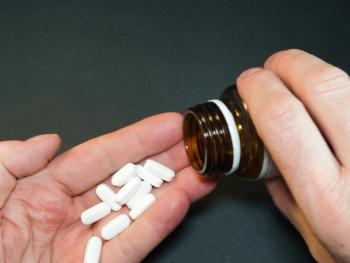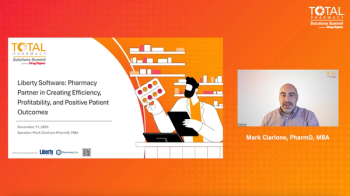
- Vol. 162 No. 04
- Volume 126
- Issue 04
Explaining the Flawed DIR System to Student Pharmacists
Peter Kreckel recently tried to explain DIR fees to students. Here’s how it went.
My daughter Gretchen Garofoli, PharmD, a clinical assistant professor at West Virginia University, invited me to lecture to her pharmacy class about insurance and billing claims, and their impact on community pharmacy.
I tried to explain AWP (average wholesale price), WAC (wholesale acquisition cost), and direct costs, and help them understand with some examples, such as how the AWP for Aripiprazole 30 mg is $1362.26, and the WAC is $50.45. I thoroughly enjoyed my interaction with these future pharmacists. I have a passion for community pharmacy, and never miss an opportunity to interact with student pharmacists.
The one challenge I did have was explaining the concept of
I asked the class if anyone worked for an independent pharmacy. One student raised his hand and said he worked for Waterfront Pharmacy in Morgantown. I asked him to work with me on this example: “My grass needs to be cut, I live on about half an acre, would you be willing to cut my grass for $40?” I told him it takes about 1.5 hours to cut the grass. He agrees to my offer and accepts it. So, in our scenario, he finishes cutting the grass and I hand him only $20. He complains that we agreed on $40.
I told the class that is exactly how DIR fees work; we pharmacists have no control of what we will be paid after we dispense the drug. We get “whacked” for the DIR fees. DIR fees are assessed against the pharmacy when the invoices arrive. We don't know until the check arrives, that a DIR fee was taken out. Pharmacists can’t budget for these takebacks because they are driven by Star Ratings and
Related article:
No one in any community pharmacy provides the level of healthcare that our independent pharmacies do to take care of our patients. If anything, we need government protection from the predatory practices of the PBMs and major chains. Seems to me that the only ones in healthcare making money are the ones who never interact with a patient!
My preceptor Louie Rinovato told me once: “You have to pay attention to the business side as much as the clinical side. You can go out of business filling 30 prescriptions a day; you can go out of business filling 300 prescriptions a day. One is a lot easier than the other!”
In those days in the late 1970s, when many pharmacies were still using “40% fair trade markup,” pharmacists would never have envisioned the ridiculous reimbursement system that we have 40 years later.
I often serve as a preceptor and my latest pharmacy student is William Thompson IV, the son of the owner of Thompson Pharmacy, where I work. He represents the future generation of independent pharmacy owners. Billy is in his last rotation, and will graduate this April from the
He has done several community pharmacy rotations this year, and shared with me his belief is that DIR fees are the number one concern of independent pharmacies. He said that like his father’s stores, these other independent pharmacies struggle with the uncertainty of the whole DIR process. Every aspect of running a pharmacy is impacted by these fees, from inventory management to payroll and staffing. Billy reflected, "If this profession is to be sustainable someone needs to put an end to these unfair clawbacks.”
Articles in this issue
over 7 years ago
How Pharmacists Can Help Frail Patientsover 7 years ago
How to Get Paid for Pharmacy Servicesover 7 years ago
Everything Pharmacists Need to Know About DIR Reformover 7 years ago
The Future of Pharmacy Is Not All Doom and Gloomalmost 8 years ago
Apalutimide for Prostate Cancer: What to Knowalmost 8 years ago
Pediatric Patients Present Unique Challenges to PharmacistsNewsletter
Pharmacy practice is always changing. Stay ahead of the curve with the Drug Topics newsletter and get the latest drug information, industry trends, and patient care tips.











































































































































































































